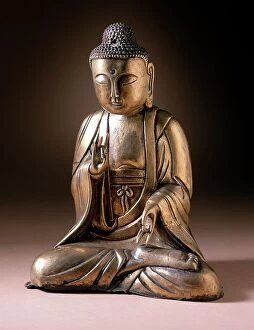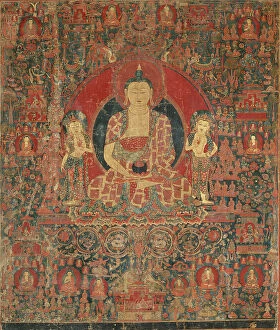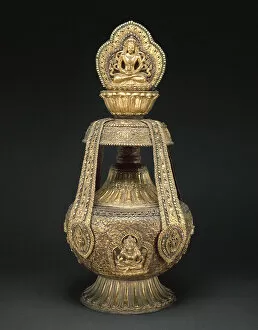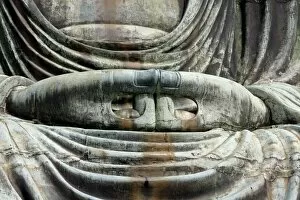Amida Buddha Collection
Amida Buddha, also known as Amitabha in Japan, holds a significant place in the religious and artistic history of the country
For sale as Licensed Images
Choose your image, Select your licence and Download the media
Amida Buddha, also known as Amitabha in Japan, holds a significant place in the religious and artistic history of the country. One of the most iconic representations is The Great Buddha of Kamakura, a majestic bronze statue dating back to 1252. Standing tall in Kamakura, it has been revered for centuries as a symbol of peace and enlightenment. Legends from the Yuzu Nembutsu Sect during the 14th century speak about Amida Buddha's compassionate nature towards all beings. Despite being created by an unknown artist, its spiritual essence shines through time. Intricate artworks like the Vase of Longevity with Buddha Amitabha from the 17th century showcase Amida's divine presence. Crafted by an anonymous creator, this masterpiece reflects devotion and reverence towards Buddhism. During the Muromachi period (14th-15th century), depictions such as "Amitabha welcoming souls to paradise" emerged. These artworks illustrate how believers envisioned their journey towards salvation under Amida's guidance. The Kamakura period (13th century) witnessed another remarkable portrayal by an unknown artist. This representation captures both serenity and grace while embodying Buddhist teachings. In later periods like Edo (1615-1868), shrines enclosed statues depicting Amida were created to provide intimate spaces for worshipers seeking solace and connection with divinity. Even beyond Japan's borders, evidence of Amida's influence can be found in ancient artifacts like lintels portraying his Western Paradise during China's Tang dynasty or sculptures showcasing him alongside Bodhisattvas during Korea's Late Goryeo period. Artists throughout history have attempted to capture Amida Buddha’s ethereal beauty on various mediums - woodcarvings being one such example that showcases intricate craftsmanship combined with spiritual devotion. The Daibutsu at Kamakura continues to inspire awe even today; a testament to the enduring legacy of Amida Buddha.















